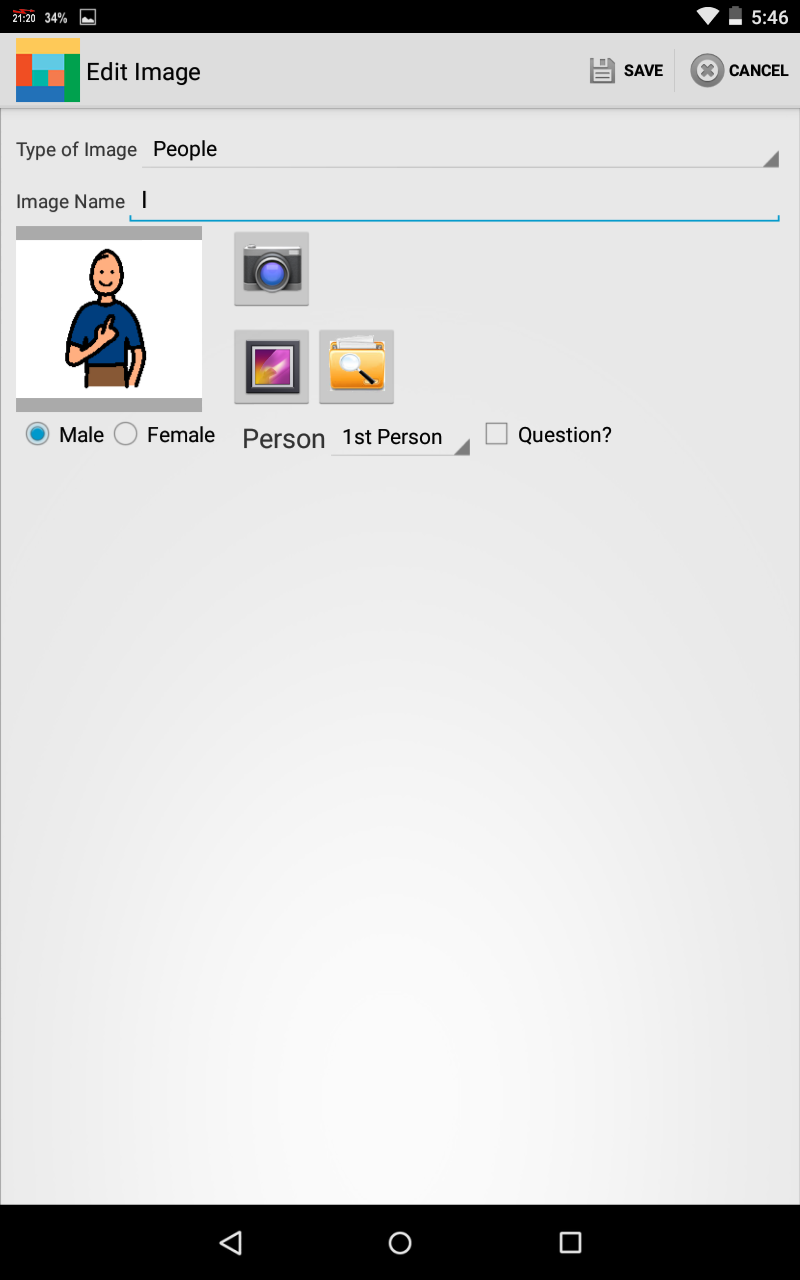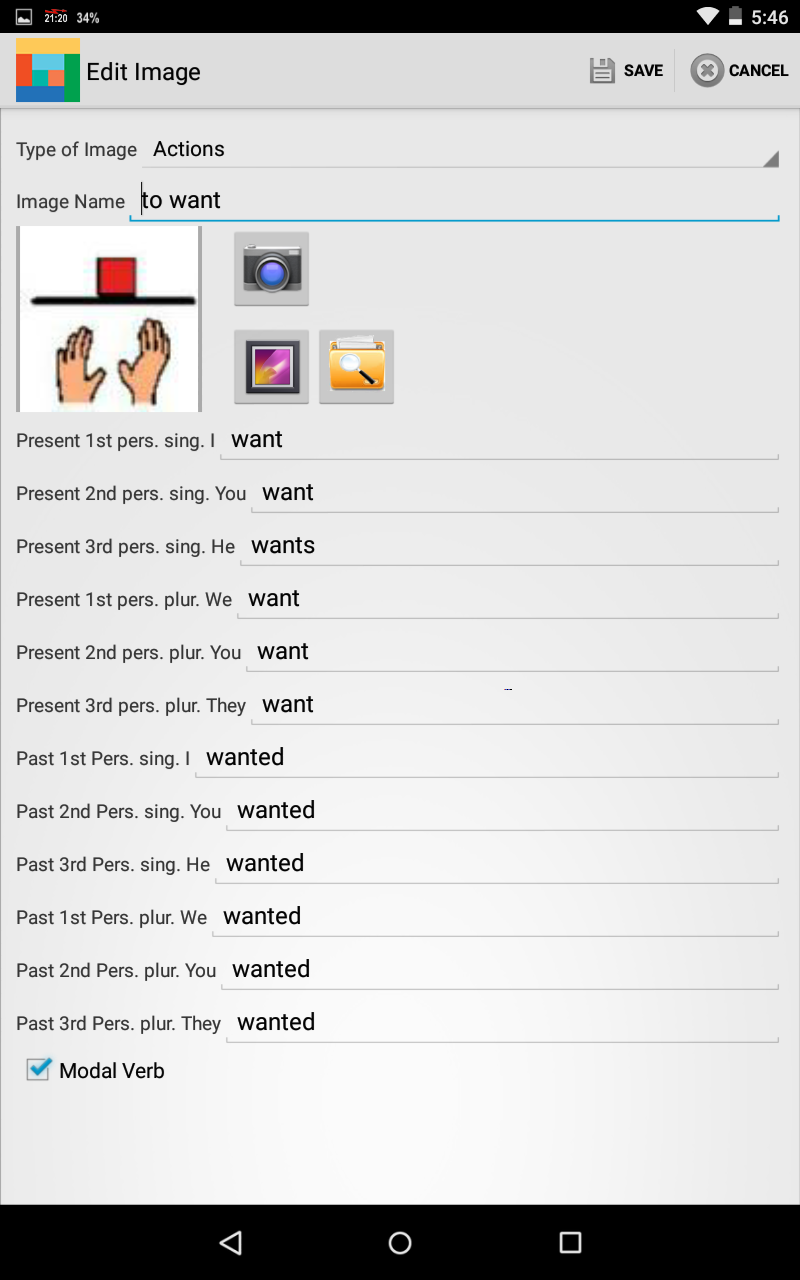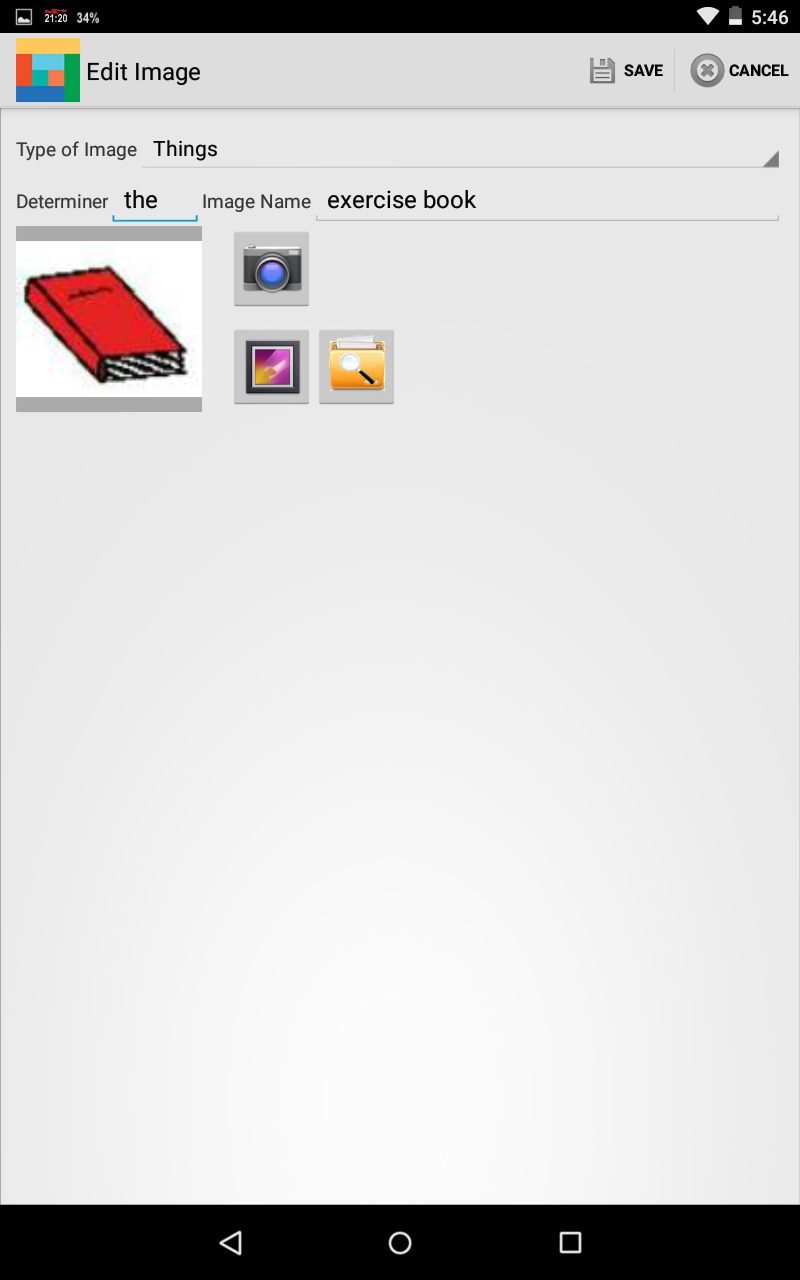Building and Editing


Let's see how it looks a table in edit mode. Remember that the main settings should be set to Edit Mode.
If you're using a tablet you can see almost all the settings that allow you to change the appearance of the table. The changes made are immediately applied to the table so you can see how this varies. For example, you can try to change the number of columns, the labels position, images text and text on the tab position, etc. etc.
If you set "creates sentence with images", it allows to show the selected image on the space where sentence are built, otherwise appears only the description of the image. This option should always be set.
The Orientation option allows you to block the orientation (this would make the use of the application much easier for the child), or to rotate according to the orientation sensor.
In each position of the tables there is a picture or a placeholder (the ![]() symbol). With a tap of a symbol or a placeholder, it appears a context menu with the following items:
symbol). With a tap of a symbol or a placeholder, it appears a context menu with the following items:
From the menu of the page we can:


Let's see how we can change the image.
Depending on the kind of symbol, the data that we can insert are different; for example, for a person you must enter the name of the symbol, whether it is male or female, whether it is first person, second person, or indefinite, whether it is a question.
For a verb, for example, we can insert, the infinitive and all other conjugations, first, second and third person singular and plural. We can also indicate whether the verb is a modal verb such as want, can, must. During the construction of a sentence, if the correct conjugation is not found because it is not found because it's not inserted, it is used the infinitive verb.


For adjectives, for example, we can insert the male and female description, for objects we can define the definite article.